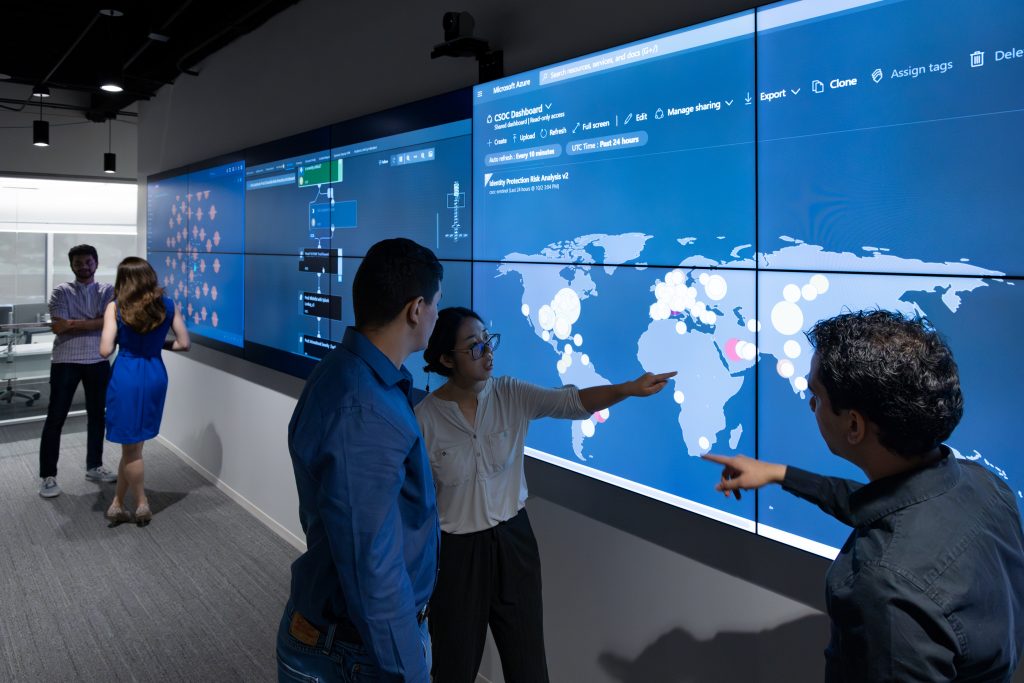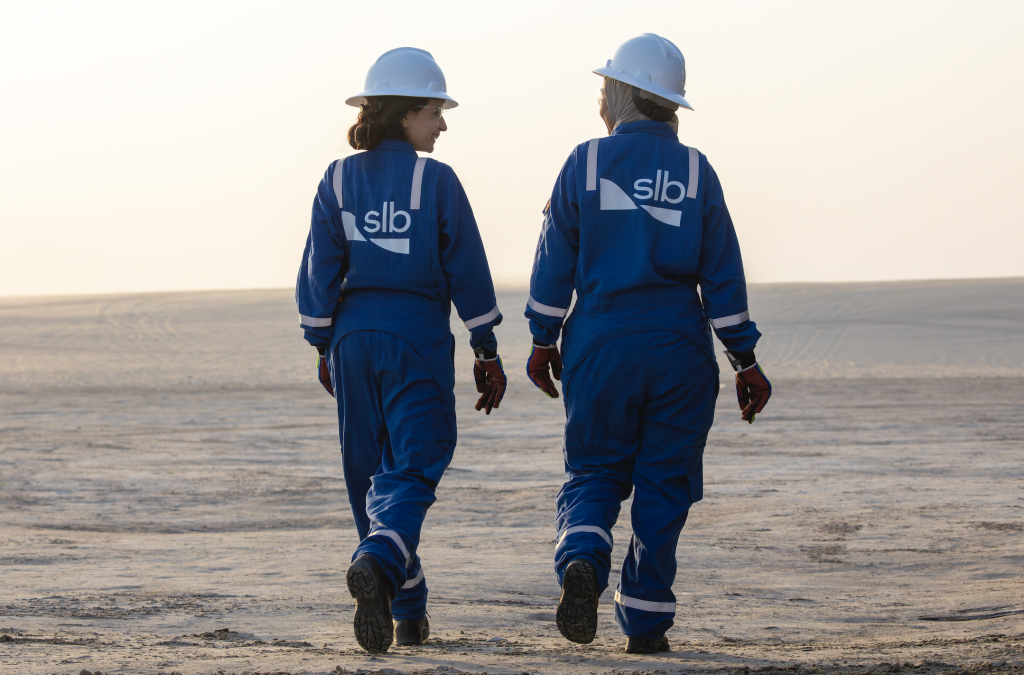
Rakesh Jaggi is the president, Digital & Integration, SLB, a position he assumed in April 2023. Over the past 10 years, he has held several management roles including senior vice president of sales and commercial, president completions, vice president technology lifecycle management, vice president sustaining and president well intervention services. Rakesh began his SLB career as a wireline field engineer in India, Trinidad and Tobago followed by field management roles in Colombia, Trinidad and Tobago. He was then assigned to leadership positions including vice president wireline operations in North and South America, vice president and general manager India operations, vice president well services in Middle East and Asia regions and global vice president new businesses. He graduated in Mechanical Engineering from the Indian Institute of Technology-New Delhi and joined Schlumberger in 1992.
What are the primary enablers of successfully translating a digital strategy to actual realized impact on the ground? What are the measures of success?
A focus on performance and safety has always been essential, and now sustainability must also be part of the strategy. Balancing these three dimensions adds complexity but also opens the door to new opportunities and innovations by broadening our perspective.
A critical enabler is ease of use and interoperability of digital technologies. We’ve all heard of promising local test deployments that go nowhere, and this is generally because a lack of compatibility between data and systems means they cannot be deployed at scale. Building solutions based on common standards, such as the Open Group’s OSDU® Technical Standard, can make the transition from pilot to full-scale implementation a much smoother process.
Ultimately, for me, the true marker of a successful digital strategy is organization-wide change. This involves companies shifting from time-consuming, largely manual processes to efficient, digitized processes that automate routine tasks. This enhances efficiency and unlocks their greatest resources of all: the time and mental space of their workforce, freeing them to innovate and push boundaries.
Assess whether your top technical experts are remaining with the company. If they are, it indicates that you’re doing something correctly.

Which digital technologies do you believe will be the most pivotal on the road to net zero emissions? Can you give some examples of how these technologies will be applied?
Today, our industry emits over 5 GtCO2 annually, making the journey to net zero emissions both urgent and challenging. To address this, we must prioritize impactful digital technologies in areas like carbon capture, utilization and storage (CCUS), methane emissions reduction, elimination of non-emergency flaring, electrifying upstream facilities, and expanding low-carbon hydrogen.
In methane management, digital solutions for detecting and fixing leaks, as well as reporting performance, are crucial. These technologies offer real-time monitoring and rapid response, significantly reducing emissions.
“Solutions that have traditionally been used in oil extraction, such as reservoir modeling, data management, and drilling solutions, can be extremely beneficial for CCUS projects.”
The synergy of legacy technologies with emerging innovations like generative AI also holds immense promise. Solutions that have traditionally been used in oil extraction, such as reservoir modeling, data management, and drilling solutions, can be extremely beneficial for CCUS projects. These digital tools lower costs and manage risks in site selection, design, capture, transport, and storage, accelerating the transition to net zero. By leveraging existing domain expertise and integrating cutting-edge solutions, we can make swift progress on the pathway to our emissions goals.
How is digital innovation helping overcome the challenges of rigorous safety, regulatory, and cost constraints in field operations?
Digital innovation plays a crucial role in achieving both safety and performance improvements. We’ve already seen tremendous progress through the introduction of autonomous systems which are revolutionizing field operations by automating repetitive tasks. This enhances efficiency and minimizes human error, improving safety for both people and equipment. For instance, autonomous inspections and maintenance reduce the need for human workers to enter hazardous environments, thereby protecting people while simultaneously enhancing operational efficiency.
By integrating cross-discipline workflows, companies can break down silos and uncover new opportunities that might have been previously overlooked. This approach optimizes the entire ecosystem from field to office, rather than focusing on individual components. Intelligent systems like our recently introduced OptiSite™ facility, equipment, and pipeline solutions, as well as OptiFlow™ production assurance solutions, provide real-time analytics and predictive insights. These solutions anticipate issues and aid human interpretation, enabling more informed, proactive decision making. At a customer facility in the Middle East, our solutions forecasted 88% of failures up to 21 days in advance, significantly reducing unplanned shutdowns. This ensures compliance with safety and regulatory standards, and also drives operational efficiency, ultimately reducing costs.

Which new SLB technologies are you most excited about deploying for your customers? Can you share some details of their real-world applications or ones we can expect to witness soon?
Data is often referred to as the new oil, and we apply the same rigor in collecting, processing, distributing, and utilizing data as we do with hydrocarbons. Our Lumi™ data and AI platform is a prime example of how we are adapting AI and generative AI technologies to meet the specific needs of the energy sector, with the option to deploy on-premises, or on the cloud.
AI on the edge is another technology that holds immense promise. With our Agora™ edge AI and IoT solutions, our domain expertise, and the physics-informed AI models we have developed with our partners, we are on our way to make our field operations and workflows automatic and autonomous. This promises to improve the efficiency and productivity of our operations while significantly reducing our carbon footprint too.
“Data is often referred to as the new oil, and we apply the same rigor in collecting, processing, distributing, and utilizing data as we do with hydrocarbons.”
In real-world applications, we’ve successfully integrated these technologies into our solutions. For instance, from an autonomous operations deployment on a remote pad in South America, an SLB customer achieved a remarkable 57% reduction in CO2 emissions while delivering a sustained 4% increase in production. This deployment also significantly reduced the well and equipment failure index and achieved near-perfect reliability in the chemical injection system.
Moreover, SLB has made significant strides in autonomous drilling. Within a few years, we transitioned from automating the rig to achieving autonomous geosteering. By shifting our focus from the rig to downhole operations, we’ve been able to enhance precision and efficiency in drilling activities—a significant advancement in the field.
“Within a few years, we transitioned from automating the rig to achieving autonomous geosteering”
How does SLB select and leverage its strategic partnerships in the journey of digitalization and integration?
When selecting strategic partnerships, we look for those who share a common vision with SLB, who have safety, innovation, and sustainability at the heart of everything they do. Recognizing that partnerships are essential to the energy industry, SLB seeks out collaborators with the capability to implement workflows on a large scale, ensuring we use processes and infrastructure that enable high uptime and accelerate deployment in new locations.
Additionally, we highly value our partnerships with breakthrough innovators who can bring fresh perspectives and new ideas. This collaborative approach drives digital transformation and aligns with our commitment to navigating new frontiers together, as highlighted by the theme of the recent SLB Digital Forum 2024.
Collaborating with the right technology partners ensures we can navigate data residency challenges, the regulatory landscape, and create technologies that liberate and manage all types of data, structured and unstructured, giving customers the choice of deployment on-premises or on the cloud.

What advice do you have for young professionals entering the energy workforce in the context of the skill sets needed for digital transformation and energy transition?
Entering the energy industry can be one of the most exciting and rewarding paths for a young person, particularly in the context of ongoing digital transformation and the energy transition. Innovative thinking and fresh perspectives are highly valued, as we continually seek ways to improve efficiency, sustainability, and overall performance.
The energy industry is changing at a rapid pace, and this will continue. If you work in this industry, adaptability and a willingness to continue to learn and grow will be your greatest asset throughout your career.
Technology is embedded in the industry’s DNA. From advanced data analytics to automation and AI, the energy industry is at the forefront of technological innovation and has the capital to continue the drive to develop and implement new, groundbreaking solutions. Familiarize yourself with these technologies and consider how they can be applied to solve complex challenges.
Energy is also one of the most global and multicultural sectors. In my experience, if you embrace this diversity and seek to understand different perspectives, it will immensely enrich your professional journey and contribute to more successful and comprehensive solutions.
“Entering the energy industry can be one of the most exciting and rewarding paths for a young person, particularly in the context of ongoing digital transformation and the energy transition.”

